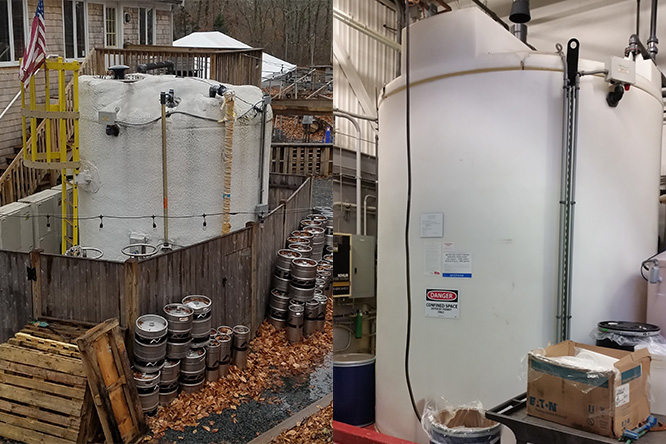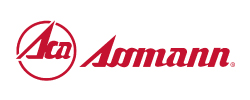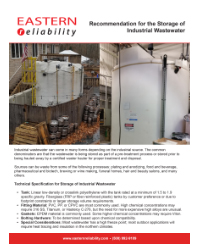Recommendations for Storage of Industrial Wastewater
Industrial wastewater can come in many forms depending on the industrial source. The common denominators are that the wastewater is being stored as part of a pre-treatment process or stored prior to being hauled away by a certified waster hauler for proper treatment and disposal.
Sources can be waste from some of the following processes: plating and anodizing, food and beverage, pharmaceutical and biotech, brewing or wine making, funeral homes, hair and beauty salons, and many others.

Technical Specification for Storage of Industrial Wastewater:
Cross-link polyethylene with the tank be rated at a minimum of 1.9 specific gravity. Fiberglass (fiber reinforced plastic or FRP) tanks by customer preference, due to footprint constraints, or larger storage volume requirements
- Tank:
Linear low-density or Cross-link polyethylene with the tank rated at a minimum of 1.5 to 1.9 specific gravity. Fiberglass (FRP or fiber reinforced plastic) tanks by customer preference or due to footprint constraints or larger storage volume requirements. - Fitting Material:
PVC, PP, or CPVC are most commonly used. High chemical concentrations may require 316 SS, Titanium, or Hasteloy C-276, but the need for more expensive high alloys are unusual. - Gaskets:
EPDM material is commonly used. Some higher chemical concentrations may require Viton. - Bolting Hardware:
To be determined based upon chemical compatibility. - Special Considerations:
Most wastewater has a high freeze point; most outdoor applications will require heat tracing and insulation in the northern climates.
Secondary Containment
All end users should check local regulations to meet secondary containment requirements. Containment must be adequate in capacity and suitable for sodium hydroxide. By accepting the delivery of the tank, the customer accepts full responsibility for providing appropriate and adequate containment for the stored material. Eastern Reliability offers a variety of secondary containment basins.
Connections
Bulkhead style connections can be used on tanks 2,000 gallons and below. For tanks above 2,000 gallons, sidewall connections should be PVC, PP, CPVC, or metallic construction (flange style fittings are often recommended). Sidewall connections should be installed a minimum of 7" above the tank floor. Internal siphon drains can be used if required.
Sidewall connections should be kept to a minimum amount and should be placed no closer than 22° apart. Whenever possible, sidewall connections should not be greater than 3". There are no restrictions on dome fittings.
If a double wall tank is required based on corporate protocol or local and state regulations, a top pump out assembly is recommended. Bottom drain fittings are not recommended on double wall tanks as this defeats the purpose of secondary containment.
Top pump out assembly is accomplished by marrying an internal drop tube assembly with a tank fill assembly that has an external drop tube piped down to a 2" cam-lock fitting or piped to the treatment process. Top pump out may cause some pumping issues, but this can be easily overcome with the expertise of Eastern Reliability’s applications engineers.
Flexible Hoses or Expansion Joints (not required for FRP tanks)
Flexible hoses or expansion joints must be used on all lower ½ sidewall connections. A lightweight isolation valve is permitted prior to the flexible joint. Nipple and valve weight must not exceed 8 pounds. All piping must be supported independent of the tank. Pipe supports must be installed after the flexible joint to allow the tank to expand and contract under normal service conditions. Polyethylene tanks expand and contract both laterally and vertically; the expansion hose or joint must accommodate for this expansion.
Tank must maintain atmospheric pressure. Vents must be sized for a minimum of two times the largest inlet or outlet port for pneumatically filled tanks. Pump fill tank’s vent should be a minimum of one-and-a-half times larger than the largest fill or discharge point. Adequate venting must always be maintained.


